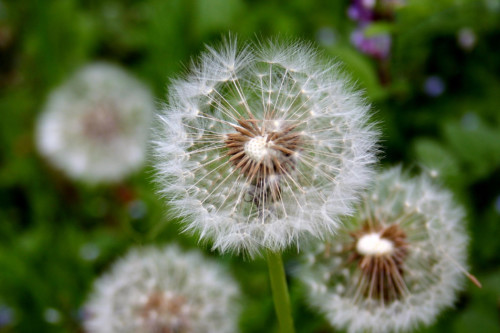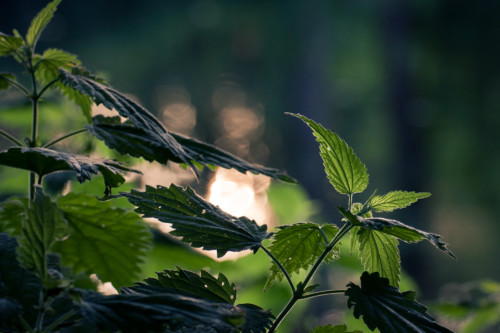
The Wild, Wonderful World of Edible Weeds
It’s safe to say that weeds have a bad rep. They are unattractive nutrient sinks that frequently disrupt otherwise spotless flowerbeds – and once they are settled in, they can be difficult to remove. Still, unwanted plants play a vital role in the well being of a garden– and often, you can eat them.
Eating weeds may sound counter intuitive – they’re weeds for a reason, right? – but humans have been chowing down on them for thousands of years. Growing up, my Greek grandmother would frequently stop at the side of the road to pick dandelions, stems and all, just as her mother had did in Greece, and later, suburban America.
Cooked in a skillet over low heat with olive oil and lemon, horta is a staple in Greek cuisine (it’s also used as a salad green in continental Europe; one bite would have the taste buds guessing “spinach”, but its flavor scans richer and more complex. The dish is derived from the stuff growing in your backyard; as you’ll note in our manifesto in defense of weeds, unwanted plants help gardeners understand the alkalinity of their soil, but they’ve also been nourishing our ancestors for years before monoculture deemed them “weeds”.
From Lamb’s quarters and clover to purslane and plantain, the menu of edible weeds is pretty extensive for most suburbanites (after all, since weeds are so adaptable and resilient, they grow just about everywhere). Edible Wild Food’s dizzying directory reveals multiple categories of edible weeds. Vines, such as honeysuckle, kudzu and wild grape are delicious stir fried or prepared in a salad, as are flowers like violet and yarrow. Plants that resemble leafy green vegetables – like the unsightly plantain and pigweed plants, or even stinging nettle – taste great as well. (Just make sure you cook stinging nettle before consumption, otherwise you’ll get stabbed.)
Before you grab your produce basket and rush into the backyard to start foraging, it’s important to keep several things in mind. First, as with all naturally-occurring plants, make sure that the soil is free of contaminants such as lead or pesticides (read our soil testing article to find out how). Most leafy green plants retain toxins, making cooking inefficient and ineffective – so urban dwellers need to be extra vigilant about finding out the pedigree of their native weeds. Also keep in mind that while consuming wild produce (a great pseudonym to use when presenting them to unsuspecting dinner guests) is generally seen as good for body, mind and soil, they should be consumed slowly and in small quantities at first to allow the body to acclimate. (So nibble on a dandelion leaf the day before tucking into a whole salad to make sure you aren’t allergic.) Not all parts of wild plants are edible, so its also good to consult trusted resources like the ones listed in the following paragraph.
After assembling weeds of various types, have fun with culinary exploration. Swap freshly-picked clover for strawberries in a simple syrup. Pick the leaves off grape vines and stuff them with rice and meat for homemade stuffed grape leaves. Boil yarrow, mallow, and chamomile for a relaxing tea. The opportunities for innovation are endless and inherent, detailed in indispensable books like The Handbook of Edible Weeds and Backyard Foraging. For a fun urban exploration, check out a copy from the local library and set off into the local park in search of the pictured plants. Who knows what gourmet delights await?



































